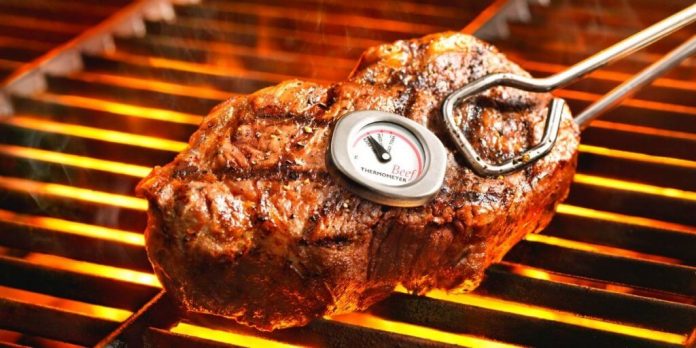Food poisoning usually isn’t life threatening. It can be uncomfortable, but most people recover completely within a few days even without treatment.
What is food poisoning?
Foodborne illness, more commonly referred to as food poisoning, is the result of eating contaminated, spoiled, or toxic food. The most common symptoms of food poisoning include nausea, vomiting, and diarrhea.
Although it’s quite uncomfortable, food poisoning isn’t unusual. According to the Centers for Disease Control and Prevention (CDC)Trusted Source, 48 million people in the United States (or around 1 out of 7) contract some form of food poisoning every year. Of those 48 million people, 128,000 are hospitalized.
Food poisoning symptoms
If you have food poisoning, chances are it won’t go undetected.
Symptoms can vary depending on the source of the infection.
Common cases of food poisoning will typically include a few of the following symptoms:
abdominal cramps
diarrhea
nausea
vomiting
loss of appetite
mild fever
weakness
headache
Symptoms of potentially life threatening food poisoning include:
diarrhea that lasts for more than 3 days
a fever higher than 102°F (38.9°C)
difficulty seeing or speaking
symptoms of severe dehydration, which may include dry mouth, passing little to no urine, and difficulty keeping fluids down
bloody urine
If you experience any of these symptoms, contact a doctor or seek medical treatment immediately.
How long does food poisoning last?
The length of time it takes for symptoms to appear depends on the source of the infection, but it can range from as little as 30 minutes to as long as 8 weeks.
With or without treatment, most cases will resolve in 1 week.
Causes of food poisoning
Most food poisoning can be traced to one of three major causes: bacteria, parasites, or viruses.
These pathogens can be found on almost all of the food humans eat. However, heat from cooking usually kills pathogens on food before it reaches our plate. Foods eaten raw are common sources of food poisoning because they don’t go through the cooking process.
Occasionally, food will come in contact with the organisms in fecal matter or vomit. This is most likely to occur when an ill person prepares food and doesn’t wash their hands before cooking.
Meat, eggs, and dairy products are frequently contaminated. Water may also be contaminated with organisms that cause illness.
Bacteria
Bacteria are by far the most common cause of food poisoning. Bacterial causes of food poisoning include:
E. coli, in particular Shiga toxin-producing E. coli (STEC)
Listeria monocytogenes
Salmonella
Campylobacter
Clostridium botulinum
Staphylococcus aureus
Shigella
Vibrio vulnificus
When thinking of dangerous bacteria, names such as E. coli and Salmonella come to mind for good reason.
Salmonella is the biggest bacterial causeTrusted Source of food poisoning cases in the United States. According to the CDCTrusted Source, an estimated 1,350,000 cases of food poisoning, including 26,500 hospitalizations, can be traced to salmonella infection each year.
Campylobacter and C. botulinum are two lesser-known and potentially lethal bacteria that can lurk in our food.
Parasites
Food poisoning caused by parasites isn’t as common as food poisoning caused by bacteria, but parasites that spread through food are still very dangerous. They include:
Toxoplasma gondii
Giardia lamblia
various tapeworms, such as:
Taenia saginata (beef tapeworm)
Taenia solium (pork tapeworm)
Diphyllobothrium latum (fish tapeworm)
Cryptosporidium
Ascaris lumbricoides, a type of roundworm
flukes (flatworms), such as Opisthorchiidae (liver fluke) and Paragonimus (lung fluke)
pinworms, or Enterobiasis
Trichinella
According to the CDC, toxoplasmosis is a leading cause of death attributed to food poisoning in the United States. Toxoplasma gondii is also found in cat litter boxes.
Parasites can live in your digestive tract and go undetected for years. People with weakened immune systems and pregnant people are at risk of more serious side effects if certain parasites take up residence in their intestines.
Viruses
Food poisoning can also be caused by a virus, such as:
norovirus, which is sometimes known as Norwalk virus
rotavirus
astrovirus
sapovirus
hepatitis A virus
The norovirus causes 19 to 21 million casesTrusted Source of vomiting and diarrhea in the United States each year. In rare cases, it can be fatal. Other viruses bring on similar symptoms, but they’re less common.
The virus that causes the liver condition hepatitis A can also be transmitted through food.
Food poisoning treatments
Food poisoning can usually be treated at home. Here are some ways you can help treat food poisoning:
Stay hydrated
If you have food poisoning, it’s crucial to remain properly hydrated. Sports drinks high in electrolytes can be helpful. Fruit juice and coconut water can restore carbohydrates and help with fatigue.
Avoid caffeine, which may irritate the digestive tract. Decaffeinated teas with soothing herbs such as chamomile, peppermint, and dandelion may help calm an upset stomach.
Take prescription medications
Although many cases of food poisoning clear up on their own, some people can benefit from prescription medications, depending on the pathogen responsible for their illness.
Prescription medications may benefit people who are older, immunocompromised, or pregnant. For pregnant people, antibiotic treatment helps prevent an infection from being transmitted to the unborn baby.
If you require prescription medications, your doctor may recommend one of these regimens for the following causes of illness:
A. lumbricoides: the antiparasitic medications albendazole (Albenza) or mebendazole (Enverm)
Campylobacter: the antibiotic azithromycin (Zithromax)
Cryptosporidium: the antiparasitic medication nitazoxanide (Alinia), which is used to treat diarrhea
D. latum (fish tapeworm): the antiparasitic medication praziquantel (Biltricide)
Enterobiasis (pinworms): albendazole (Albenza) or mebendazole (Enverm)
G. lamblia:
nitazoxanide (Alinia)
the antibiotics metronidazole (Flagyl), paromomycin, quinacrine, or furazolidone
tinidazole (Tindamax), which is an antibiotic and antiparasitic medication
L. monocytogenes: the antibiotic ampicillin
Opisthorchiidae (liver fluke): praziquantel (Biltricide) or albendazole (Albenza)
Paragonimus (lung fluke): praziquantel (Biltricide) or the antiparasitic medication triclabendazole (Egaten)
Shigella: the antibiotics azithromycin (Zithromax) or ciprofloxacin (Cipro)
T. saginata (beef tapeworm): praziquantel (Biltricide) or albendazole (Albenza), which are off-label treatments for T. saginata
T. solium (pork tapeworm): praziquantel (Biltricide) or albendazole (Albenza), which are off-label treatments for T. solium
T. gondii:
a combination of the antiparasitic medication pyrimethamine (Daraprim) and an antibiotic such as sulfadiazine
the antibiotic spiramycin, as a standalone medication
Trichinella: albendazole (Albenza) or mebendazole (Enverm)
Receive an antitoxin
An infection with C. botulinum is considered a medical emergency. Seek medical care as soon as you can.
If you have a case of C. botulinum, a doctor will administer an antitoxin. Babies will receive a special antitoxin called BabyBIG (botulism immune globulin).
Rest
It’s also important for those with food poisoning to get plenty of rest.
If your case is severe
In severe cases of food poisoning, you may require hydration with intravenous (IV) fluid at a hospital.
In the very worst cases of food poisoning, a longer hospital stay may be required while you recover. People with severe cases of C. botulinum, which are rare, may even require mechanical ventilation.
























